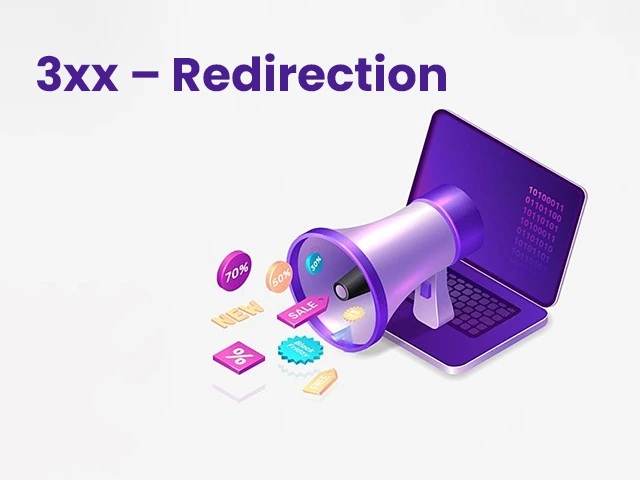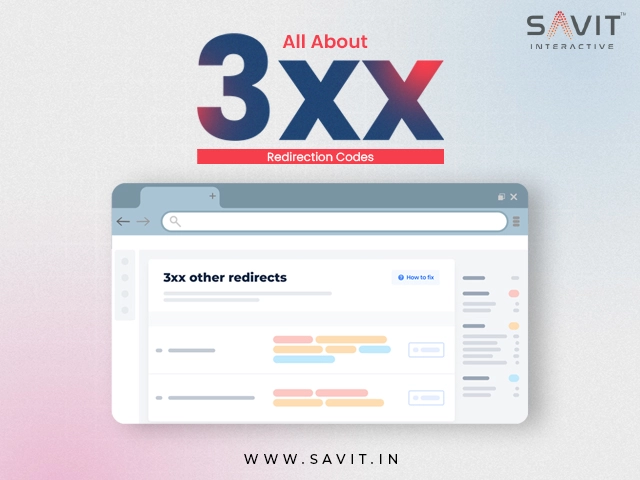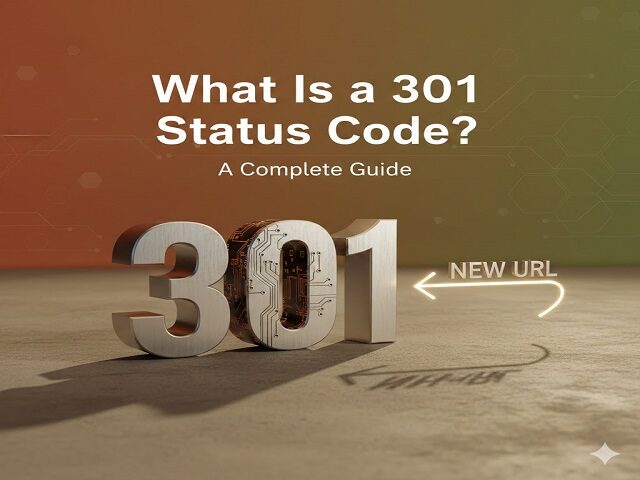Some website errors can be beneficial, and not every redirect is an error. Ever clicked a link and landed somewhere else? That’s not broken, that’s 3xx redirection at work.
These status codes quietly guide users and search engines from one URL to another, ensuring a smooth journey across the web. Whether it’s a page that’s been moved, merged, or updated, 3xx codes tell browsers: “Don’t panic! Here’s where to go next.”
Let’s explore the fascinating world of the 3xx series of HTTP status codes and their redirection techniques.
What Are 3xx Redirection Codes?
The 3xx status codes are an integral part of the HTTP response system, indicating that the requested resource has been relocated or substituted, necessitating a redirect.
Instead of saying, “This page is gone,” a 3xx code says, “This page has moved—here’s where to go.” 3xx codes are critical in website navigation, SEO, user experience, and crawlability.
Why Redirection Codes Matter?
Redirection codes are more than just technical signals, they directly impact:
- Search Engine Rankings: Correct redirection ensures your SEO juice isn’t lost during URL changes.
- User Experience: Visitors don’t end up on broken pages.
- Crawl Efficiency: Search engines understand where content has moved.
- Conversion Tracking: Analytics tools track redirected clicks effectively.
When misused, redirects can lead to ranking drops, crawl issues, or analytics gaps. When used correctly, they preserve authority and keep users happy.

Types of 3xx Redirection Codes
301 Status Code – Moved Permanently
This is the most common redirection. It tells browsers and bots: “This URL has permanently moved to a new address.”
- Best for SEO
- Passes ~90-99% link equity
- Use during domain migrations, URL restructuring, or content merging
302 Status Code – Found (Temporary Redirect)
Utilized when a resource is temporarily accessible at an alternative URL. “Come back later -we’re just relocating things for a bit.”
- Does not pass full SEO value
- Use only when the change is temporary
303 Status Code – See Other
Primarily used for form submissions or REST APIs. When a user refreshes the page, it prevents the browser from resubmitting form data.
- Enhances UX
- Common in eCommerce checkouts and secure form handling
304 Status Code – Not Modified
This code is a bit different from others – it doesn’t redirect. It tells the browser, “You already have the latest version – no need to download again.”
- Speeds up page load
- Reduces bandwidth usage
- Supports caching strategies
307 Status Code – Temporary Redirect
Like a 302 response, this also preserves the HTTP method (for instance, a POST request remains a POST). Ideal for modern applications and API design.
- Secure, modern alternative to 302
- Retains request integrity
308 Status Code – Permanent Redirect
This relatively new code works like 301 but also retains request methods. It is great for APIs or applications where method preservation is essential.
- Safer for non-GET redirects
- Less caching ambiguity
Common Redirection Mistakes to Avoid
- Opt for 302 redirects rather than 301 for permanent alterations.
- Redirect chains (A → B → C → D) causing crawl delays
- Loops (A redirects to A) leading to browser errors
- Broken redirects pointing to 404 pages
- Redirecting all traffic to the homepage can negatively impact user experience and search engine optimization.
Always audit redirects regularly and ensure each is intentional, efficient, and necessary.
Redirection & SEO: Best Practices
- Use 301 for all permanent URL moves
- Minimize redirect chains to 1 hop wherever possible
- Keep redirection rules updated during migrations
- Use server-side redirects (not meta-refresh or JavaScript) for SEO reliability.
- Monitor changes using tools like Google Search Console or Screaming Frog
Redirects may seem minor, but they’re one of the most potent tools in technical SEO when used strategically.
Redirection codes are the Internet’s traffic signals—silently guiding, protecting, and preserving users and websites. From 301s that carry authority to 304s that boost speed, each plays a crucial role in delivering information flows and experiences.
Mastering the 3xx redirection family is non-negotiable for any SEO company in India. It’s essential knowledge for developers, marketers, and technical SEO teams. When redirection is handled correctly, visibility improves, performance becomes seamless, and user trust follows.
Frequently Asked Questions
1. What are 3xx redirection codes, and when are they used?
3xx status codes are HTTP responses that indicate a request needs to be redirected to a different URL. They are commonly used when content has moved permanently (301), temporarily (302), or when caching or method handling is involved (304, 307, 308).
2. Do 3xx redirects affect SEO performance?
Yes, they do. Correct use of 301 redirects helps preserve link equity and maintain search rankings. However, incorrect redirection chains, excessive hops, or misuse of temporary redirects can negatively impact SEO performance and crawl efficiency.
3. What’s the difference between a 301 and 302 redirect?
A 301 redirect is permanent and passes most of the SEO value (link equity) to the new URL, while a 302 redirect is temporary and doesn’t pass full SEO value, making it less ideal for long-term URL changes.
4. How can redirect loops or chains harm my website?
Redirect loops can prevent users and search engines from accessing content, leading to crawl errors and poor user experience. Chains, where multiple redirects happen sequentially, slow download times and may dilute SEO signals.
5. Which 3xx status code should I use for API responses?
For REST APIs, 303, 307, and 308 are preferred. 303 redirects clients to retrieve responses using a GET request, while 307 and 308 preserve the original request method — which is crucial for secure and functional API handling.



